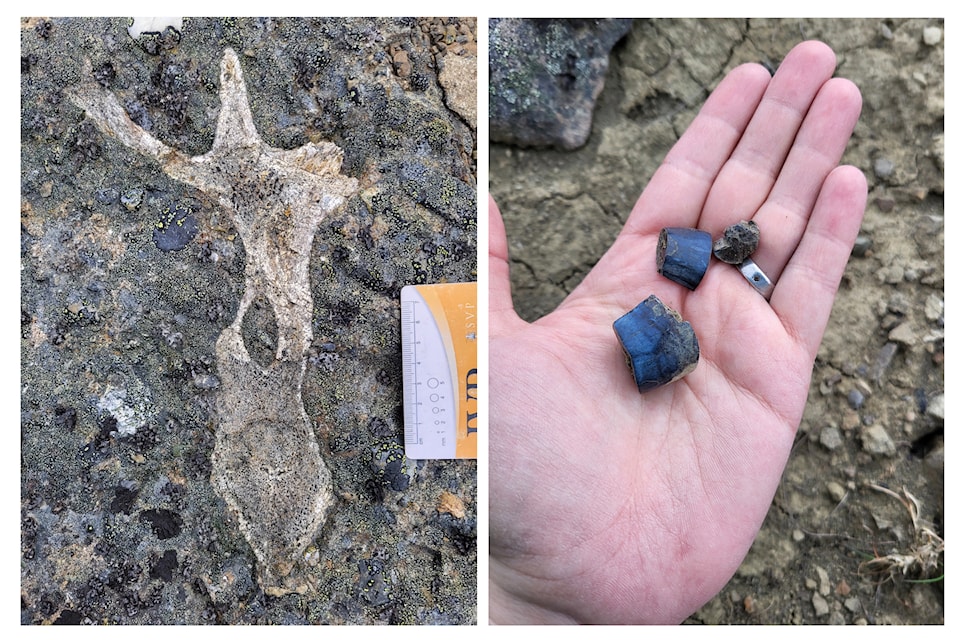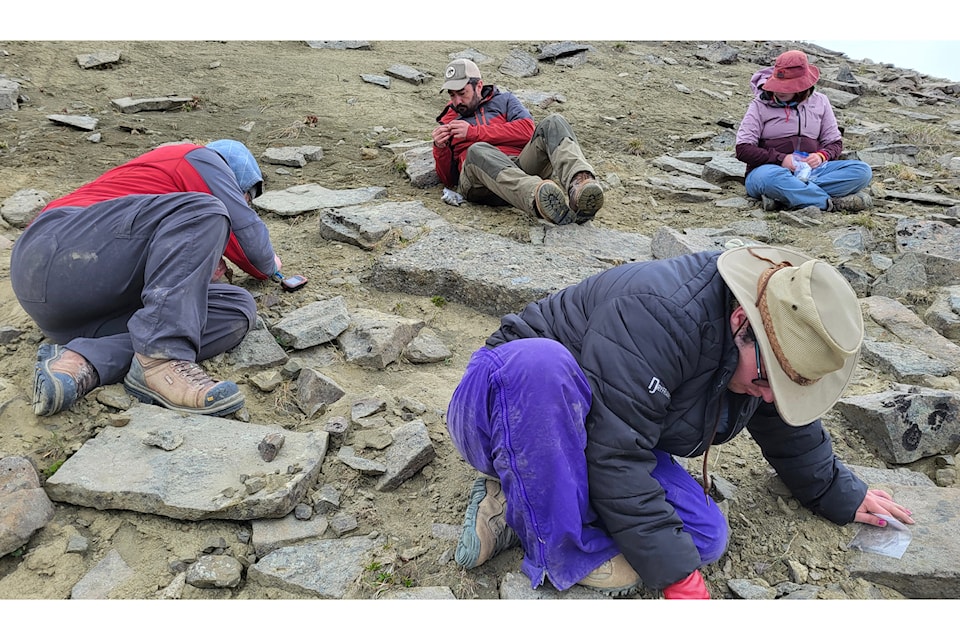After three years of exploration, a paleontology team from the Royal BC Museum uncovered a trove of fossils in the rugged terrain of the Skeena Mountains in Spatsizi Plateau Wilderness Provincial Park.
The fossils, estimated to be about 66 to 68 million years old, include an array of well-preserved remains from various dinosaur species from a geological area known as the Sustut Basin.
Among the finds are over 90 fossils, including teeth from a relative of Tyrannosaurus rex, teeth from a relative of Triceratops, bones from at least one large herbivore, and the foot of a small meat-eater and the remains of a Ferrisaurus sustutensis - B.C.’s only known native dinosaur to date.

Yet, reaching the site has proven to be a challenge, said Victoria Arbour, curator of paleontology at the Royal BC Museum and lead researcher on the project. Blizzards in 2019 and a major wildfire in 2023 hindered the team's work. The fossil site, located at an altitude of 2,000 metres, is accessible only by helicopter.
“This site is unlike any other in Canada,” said Arbour. “Not only are we finding fossils in the mountains, but the dinosaurs we are finding were living among the mountains, too, which is really different compared to other fossil sites in North America.”
Determining the full scope of the discovery will require extensive analysis and interpretation to have a comprehensive understanding of what species were discovered.
“We’re excited to start figuring out what species we may have found - these could be examples of T. rex and Triceratops known from elsewhere in Canada and the U.S., or they could be entirely new species not yet known to science,” she said.
Found by chance in 2013, the site was discovered by a museum alpine biodiversity team during their first expedition collecting data on plants and insects.
“The curator of botany had picked up a dinosaur tooth that ended up being from a tyrannosaur,” said Arbour. “When I found out about this, I was really excited because [it often means] that there’s going to be more bones in this whole area.”
Arbour qualified this finding as “truly remarkable”.
“This would be sort of like what I would expect if I was working in the Badlands of Alberta,” said Arbour. “We haven't found a whole skeleton or a whole skull - and it'll probably be really hard to do that on the mountain - but finding fossils up on the plateaus, up on mountains is not the usual place that we find dinosaurs in most of Canada and the United States.”
What makes this discovery even more unique is its location, noted to Arbour.
“The dinosaurs were also living up in the mountains. Most dinosaurs in North America, that we know of, were living in coastal environments along an ancient seashore," Arbour said. "These dinosaurs on the Spatsizi Plateau would have been living in sort of valleys in between really tall mountain ranges, in a really different environment.”
While the bones of coastal-dwelling dinosaurs were eventually buried and conveniently preserved in sediment layers at the bottoms of creeks and rivers, mountain fossils remained exposed to the elements.
“You just don't really find [fossils] up in the mountains,” said Arbour. “So, this is really neat because… we have no idea what to expect about the dinosaurs from there.”
Although this summer's expedition has been a success, Arbour noted the work is just beginning as a tedious and time-intensive process lies ahead.
“A lot of those specimens are still encased in rock or at least have some rock on them so we'll be using special tools to get all the rock off so we can see the bones.”
Over the next few years, the fossils will be analyzed at Colwood's PARC Campus, a secure repository for the province’s collections and research, currently under construction and set to open in 2026.
Eagerly awaiting the first results of their research, Arbour and her team are excited to uncover a piece of the province's prehistory.
“This gives us a better understanding of how B.C. has changed over millions and millions of years,” she said. “These particular dinosaurs might have been living at the end of the Mesozoic, right before the asteroid impact that changed the course of evolution.”
“Understanding [more about these] dinosaurs really helps us understand those changes.”
This discovery was made possible in part by funding from the Trebek Initiative, the Natural Sciences and Engineering Research Council of Canada, and BC Parks.
Fossils are protected in British Columbia and the collection of these fossils was made possible by a Park Use Permit from BC Parks. To learn more about the rules around fossil collecting in BC, visit gov.bc.ca/gov/content/industry/natural-resource-use/fossil-management.
To learn more about dinosaurs of the Sustut Basin and fossils from the Spatsizi Plateau, visit the travelling exhibit, Dinosaurs of BC, currently on display at the Okanagan Heritage Museum until Sept. 30.

